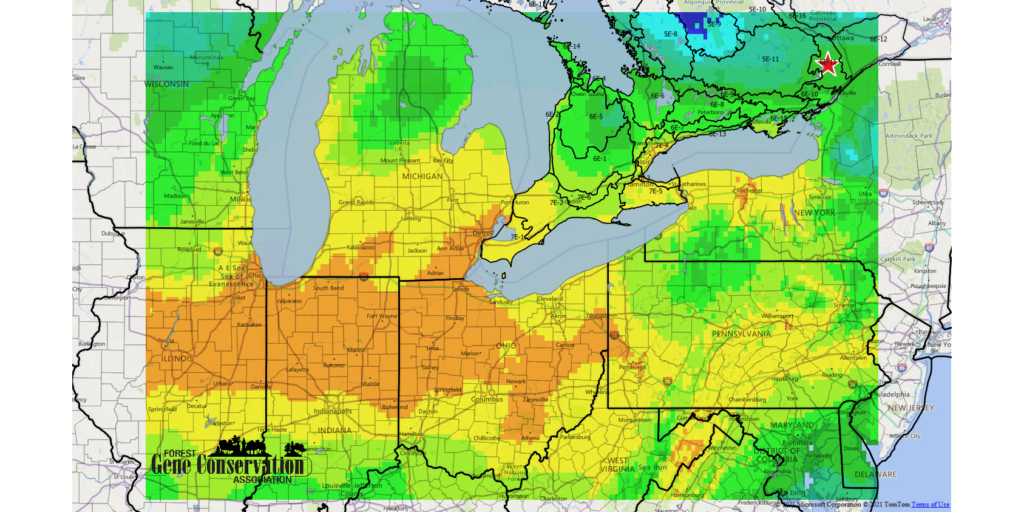What is Assisted Migration and why is it Important?
As the climate changes, some individual trees or even whole local populations may not be adapted, nor have the capacity or time to evolve to adapt to Climate Change. In some cases populations may not be able to migrate to more favorable conditions due to forest fragmentation and the rapid changes predicted.
There is evidence that the climate is changing faster than any historical natural migration event. Practitioners, landowners, policy makers, etc. must take action to ensure Ontario’s forests maintain resilience in the face of Climate Change.
Assisted migration is a Climate Change adaptation strategy that involves moving seed or material from a known location to an area with a similar climate to what the tree may be exposed to under Climate Change.

There are three types of Assisted Migration described by Natural Resources Canada.
Assisted Population Migration- The human-assisted movement of populations within a species’ established range—Lower risk
Assisted Range Expansion- The human-assisted movement of species to areas just outside their established range, facilitating or mimicking natural range expansion—Intermediate risk
Assisted Long-distance Migration- The human-assisted movement of species to areas far outside their established range (beyond areas accessible through natural dispersal)—Higher risk
What you can do
In addition to assisted migration, there are other activities you can undertake to help improve forest resilience under Climate Change
- Collect and purchase source identified seed.
- Maintain a diverse seed inventory
- Monitor changes to your local forest
- Sustainable forest management practices
- Develop local seed collection areas.
Contact the FGCA to learn what adaptation approaches are appropriate for you or your organization.
FGCA Assisted Migration Trials
The Forest Gene Conservation Association (FGCA) works with partners in Ontario to establish Assisted Migration trials to monitor the performance of stock sourced locally and from southern sources based on predicted Climate Change analysis. This work builds on the foundation developed by Natural Resources Canada and the Ministry of Natural Resources in Forestry in Claremont, Ontario (read more).
This work is low-risk Assisted Population Migration where species are within their natural ranges. These trials are an effective tool which offers practitioners, organizations and landowners the ability to measure and monitor local response and develop local sources of climate ready seed for the future.
Future trials led by the FGCA will be strategic and informed and will include other types of Assisted Migration, as the risk of doing nothing could be far greater than taking action.